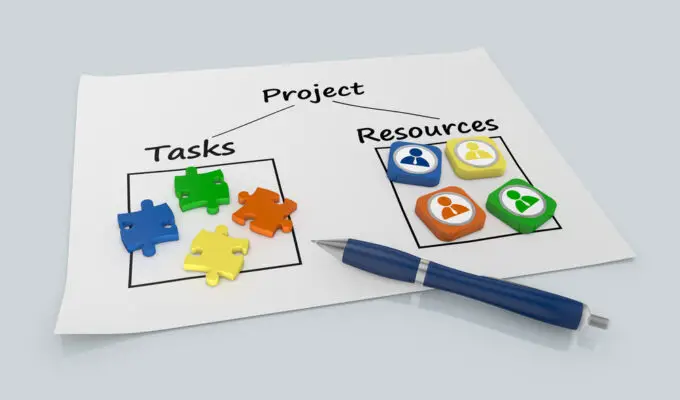Project management software is crucial in streamlining and enhancing project management processes. This article aims to provide a comprehensive guide on evaluating project management software, focusing on an analytical and objective approach.
Understanding the concept of project management software and recognizing individual needs, organizations can explore potential solutions that align with their requirements.
The subsequent evaluation process will involve a systematic analysis of various software options, aiding decision-making and ensuring the selection of the most suitable solution.
What is Project Management Software?
Evaluating project management software is crucial in determining its suitability for a specific project or organization. This process helps identify the software’s features, functionality, and compatibility with existing systems, ensuring it meets the project’s requirements.
Evaluating project management software also allows for an objective comparison between different options, enabling informed decision-making and maximizing the chances of successful project execution.

Why Evaluate Project Management Software?
Evaluating project management software’s effectiveness and suitability for fulfilling specific organizational needs is important. Organizations should consider various factors when selecting a project management solution to ensure they invest in the right software.
Firstly, evaluating project management software allows organizations to assess its features and functionalities. This helps determine whether the software aligns with the organization’s requirements and provides the necessary tools for efficient project management.
Additionally, organizations should evaluate the software’s user interface and ease of use, which can significantly impact user adoption and productivity.
Furthermore, considering the software’s scalability and flexibility is crucial, especially for organizations with complex and dynamic projects.
Lastly, evaluating project management software solutions enables organizations to assess the support and training options offered, ensuring users can effectively utilize the powerful project management tool.
Understanding Your Needs
This aims to provide an analytical and objective overview of key points related to project management.
The first point to be addressed is identifying projects, which involves determining the nature and scope of the work.
Establishing objectives and goals is another crucial aspect, as it sets the direction and purpose for the project.
Additionally, assessing team needs and resources is essential to ensure the necessary skills and tools are available.
Lastly, analyzing the complexity of projects allows for a better understanding of the challenges and potential risks that may arise during the project implementation.
Identifying Projects
One important step in project management involves the identification of potential projects. This process is crucial as it lays the foundation for effective project planning and execution.
Project managers must carefully evaluate the time required, user needs, task complexity, and available resources.
Identifying projects, project managers can determine the necessary features and functionalities that the project management software should possess. This includes features related to task management, resource allocation, and communication.
The software should also support project management’s different workflows and processes. By considering these factors, project managers can select the most suitable project management software that aligns with their needs and facilitates efficient planning and communication throughout the project lifecycle.
Establishing Objectives and Goals
Establishing objectives and goals is a fundamental step in project planning. It provides a clear direction and purpose for the project, ensuring all team members are aligned and focused on achieving the desired outcomes.
Business owners understand that careful planning is crucial for project success. Setting objectives and goals is a key aspect of this planning process. By defining specific business goals, project managers can create an implementation plan that outlines the necessary steps to achieve those goals.
This involves assessing the current workflow, identifying improvement areas, and utilising project management software to streamline processes.
Business skills, such as effective communication and using communication tools, are essential for establishing and communicating objectives and goals to all team members.
Custom workflows can also align with the project’s objectives and goals. Finally, the project evaluation process allows for assessing progress towards the established objectives and goals. This ensures that the project stays on track and achieves the desired outcomes.
Assessing Team Needs and Resources
Assessing team needs and resources involves conducting a thorough analysis to determine the specific requirements and available assets that will contribute to the successful implementation of the project.
This process is crucial in project management, ensuring the project teams have the necessary resources to complete their tasks effectively and efficiently.
To assess team needs and resources, project managers can consider the following factors:
- ReSource Management: Evaluate the availability and allocation of resources such as personnel, equipment, and budget.
- Identify the skillsets required for the project and ensure the team members possess them.
- Determine the quantity and quality of equipment needed for the project.
- Implementation and task management: Assess the project management tool’s capabilities to handle complex projects.
- Evaluate its ability to assign tasks, track progress, and manage dependencies.
- Consider the tool’s notification system to keep project teams and stakeholders informed.
Analyzing Complexity of Projects
Analyzing the complexity of projects involves carefully examining various factors contributing to the level of intricacy and difficulty in executing the tasks and achieving the project objectives.
Project management software can play a crucial role in effectively managing complex projects. Such software should offer features like project timelines, project templates, time tracking, and real-time updates.
A key aspect of project management software is its ability to serve as a single source of truth, providing accurate and up-to-date information to all project stakeholders.
Furthermore, the software should also be able to manage project budgets and track expenses. Task lists and task dependencies are other important features that help organise and prioritise project tasks.
Evaluating project management software based on these key features ensures that it aligns with the complexity of the projects and enables efficient project execution.

Finding the Right Solution
This discussion will focus on:
- Researching popular tools and solutions.
- Comparing cloud-based versus on-premise solutions.
- Identifying must-have features and benefits when finding the right project management solution.
By researching popular tools and solutions, organizations can gain insights into the functionalities and capabilities of different options available in the market.
Furthermore, comparing cloud-based versus on-premise solutions allows organizations to assess the advantages and disadvantages of each deployment model in terms of cost, scalability, and data security.
Researching Popular Tools & Solutions
When researching popular tools and solutions for project management software, it is important to consider user reviews, features offered, and pricing options.
User reviews provide insights into the usability and effectiveness of a particular project management app.
Features offered by the software should align with the specific needs of the project leader and the team.
Pricing options should be evaluated to determine if they are cost-effective and provide value for money.
Additionally, the software should offer convenient file management capabilities, allowing for easy storage and retrieval of project-related files.
A powerful tool should also provide a project timeline feature that enables the project leader to track and monitor project progress.
Effective team communication is crucial, so a cloud-based solution that facilitates collaboration is desirable.
Lastly, the software should offer flexible project views to cater to different project management styles and methodologies.
Cloud-Based vs On-Premise Solutions
Comparing cloud-based and on-premise solutions requires an examination of their respective advantages and limitations in terms of accessibility, data security, maintenance, and scalability.
Cloud-based project management software offers the advantage of accessibility, allowing users to access their project information from anywhere with an internet connection. On-premise solutions, on the other hand, require users to have access to the physical infrastructure where the software is installed.
Regarding data security, on-premise solutions may offer more control and customization options, as the data is stored within the organization’s infrastructure.
However, cloud-based solutions often have robust security measures to protect data, such as encryption and regular backups.
Cloud-based solutions typically make maintenance easier, as the provider automatically applies updates and patches.
Scalability is also a key consideration, as cloud-based solutions can easily accommodate growing project needs by offering flexible storage and computing resources.
In evaluating project management software for enterprise project management, it is important to consider the requirements of agile projects and project portfolio management.
A comprehensive feature list should include collaboration features like task assignment and document sharing and security features like user access controls and data encryption.
Choosing a cloud-based or on-premise solution depends on the organization’s specific needs and preferences.
Identifying Must-Have Features & Benefits
To identify must-have features and benefits of project management software, it is crucial to analyze the specific requirements and preferences of the organization. This analysis will help determine the essential features for effective task management and collaboration.
Some of the must-have features include:
- Task scheduling: The software should allow users to schedule tasks and set deadlines.
- Task dependencies: The ability to establish dependencies between tasks ensures they are completed correctly.
- Task estimates: The software should provide a way to estimate the time required for each task.
- Task statuses: Clear visibility into the status of each task helps monitor progress and identify bottlenecks.
- Task views: Different views, such as lists, calendars, or Gantt charts, allow users to visualize tasks in various formats.
In addition to these features, it is important to consider other factors such as boards for planning, price per user, team collaboration capabilities, and whether the software is cloud-based or not.
Evaluating Potential Solutions
When evaluating potential solutions for project management software, it is important to compare key features and functionalities.
This analysis allows for an objective assessment of each solution’s suitability for meeting specific project requirements.
Comparing Key Features & Functionalities
One approach to assessing project management software is critically analyzing its key features and functionalities. When evaluating different software options, it is important to consider the following aspects:
- Source Management:
- Integration with version control systems, such as Git or SVN
- Ability to track changes and manage different versions of project files
- Project Planning and Tracking:
- Gantt charts for visualizing project timelines and dependencies
- Task management capabilities, including assigning tasks, setting deadlines, and tracking progress
- Collaboration and Communication:
- Team collaboration tools, such as chat or discussion forums
- Integration with email and calendar systems for seamless communication
- Resource Management:
- Capacity planning to allocate resources effectively
- Resource scheduling and tracking to ensure optimal resource utilization
Project managers can determine whether a software solution meets their needs by analysing these powerful features.
Furthermore, considering the user’s requirements, features like secure file sharing and a customer success team can enhance the software’s usability and support. Lastly, low-code project management automation can streamline processes and improve efficiency.
Frequently Asked Questions
Can Project Management Software Integrate With Other Tools or Software My Team Currently Using?
The integration of project management software with other tools or software can be assessed by examining its compatibility, available APIs, and ability to exchange data seamlessly, providing a comprehensive solution for teams.
Is Project Management Software Suitable for Small Businesses or Mainly Designed for Large Enterprises?
The suitability of project management software for small businesses versus large enterprises is an important consideration.
Factors such as scalability, cost, and feature requirements should be evaluated to determine if the software meets the organisation’s specific needs.
What Are the Typical Pricing Structures for Project Management Software?
Typical pricing structures for project management software vary depending on the software’s features, deployment method, and the organisation’s size.
Pricing models may include one-time license fees, monthly subscriptions, or per-user/per-project fees.
Are Any Security Measures in Place to Protect Sensitive Project Data Within the Software?
Security measures in project management software protect sensitive project data. These measures may include encryption, user authentication, access controls, and regular backups.
Evaluating the effectiveness of these measures is essential for ensuring data protection.
Does Project Management Software Offer Any Collaboration Features for Remote or Distributed Teams?
Project management software should be evaluated for its collaboration features for remote or distributed teams. These features can enhance communication and coordination among team members, leading to improved project outcomes and efficiency.

Conclusion
In conclusion, evaluating project management software is crucial in finding the right solution for your needs. You can effectively assess potential solutions by understanding what project management software is and determining your specific requirements.
It is important to consider factors such as functionality, user-friendliness, scalability, and integration capabilities. By taking an analytical and objective approach, you can make a well-informed decision that aligns with your project management goals.
The right project management software can ultimately enhance efficiency, collaboration, and overall project success.

Chris Ekai is a Risk Management expert with over 10 years of experience in the field. He has a Master’s(MSc) degree in Risk Management from University of Portsmouth and is a CPA and Finance professional. He currently works as a Content Manager at Risk Publishing, writing about Enterprise Risk Management, Business Continuity Management and Project Management.

